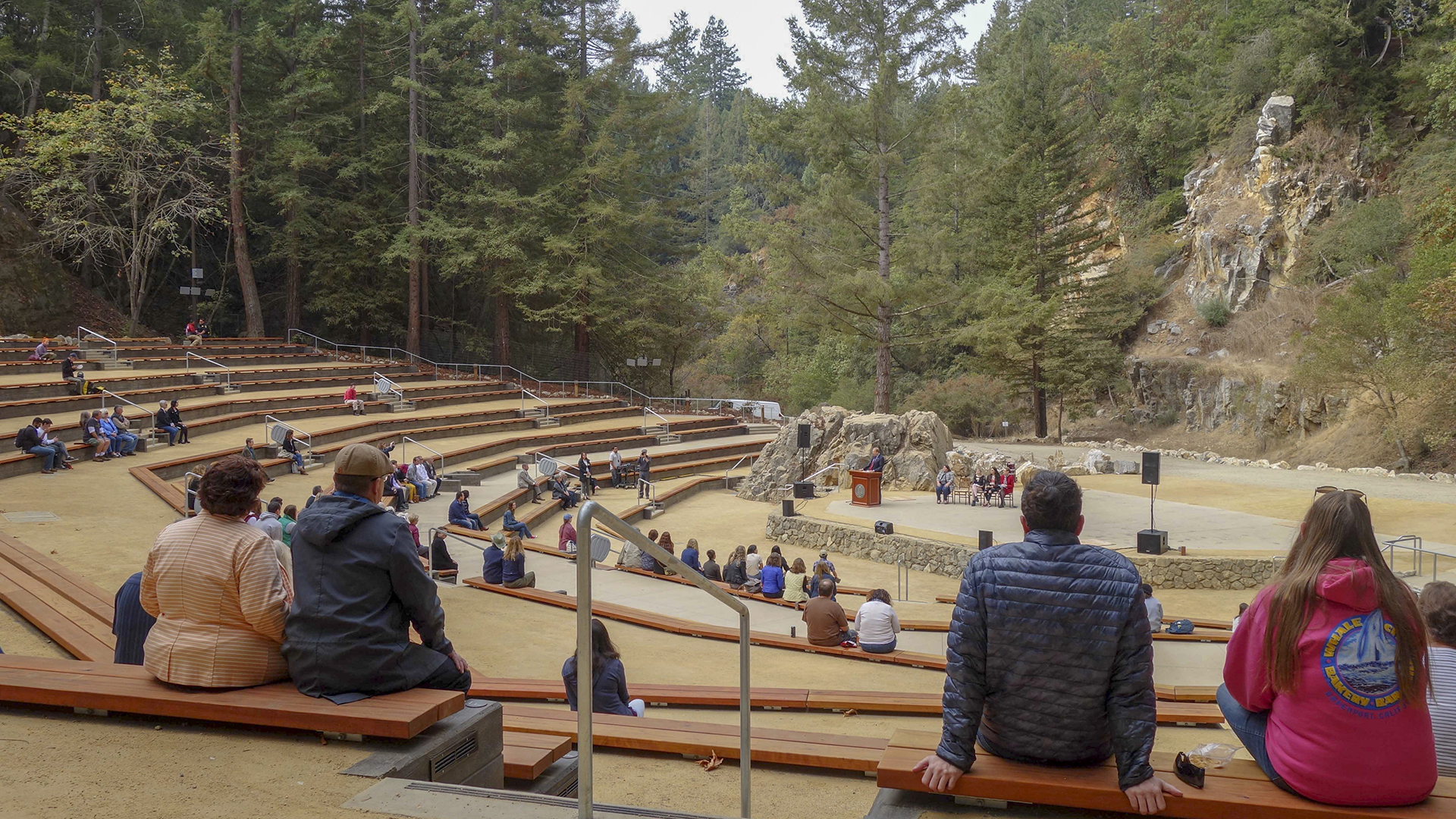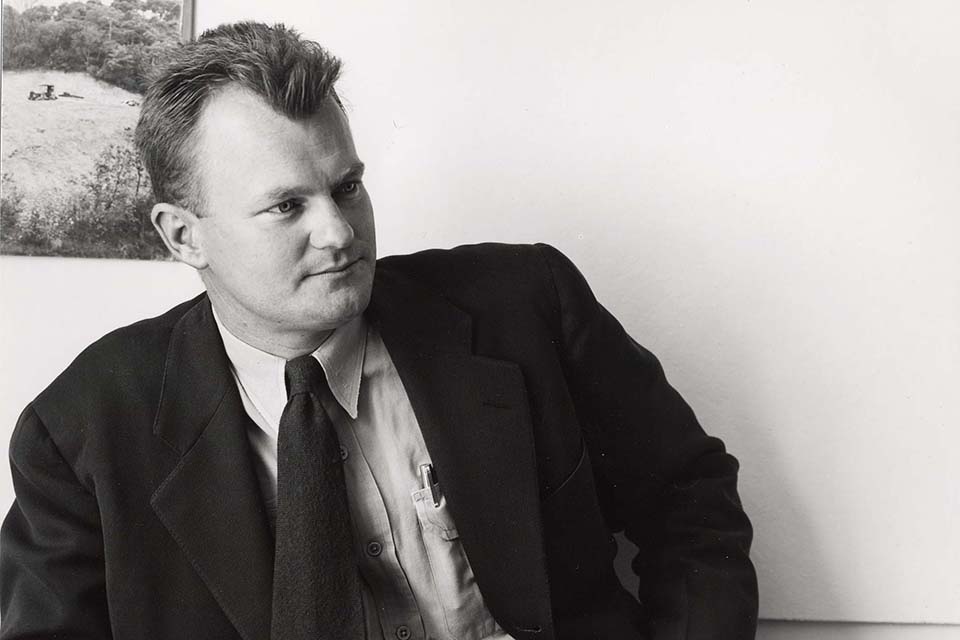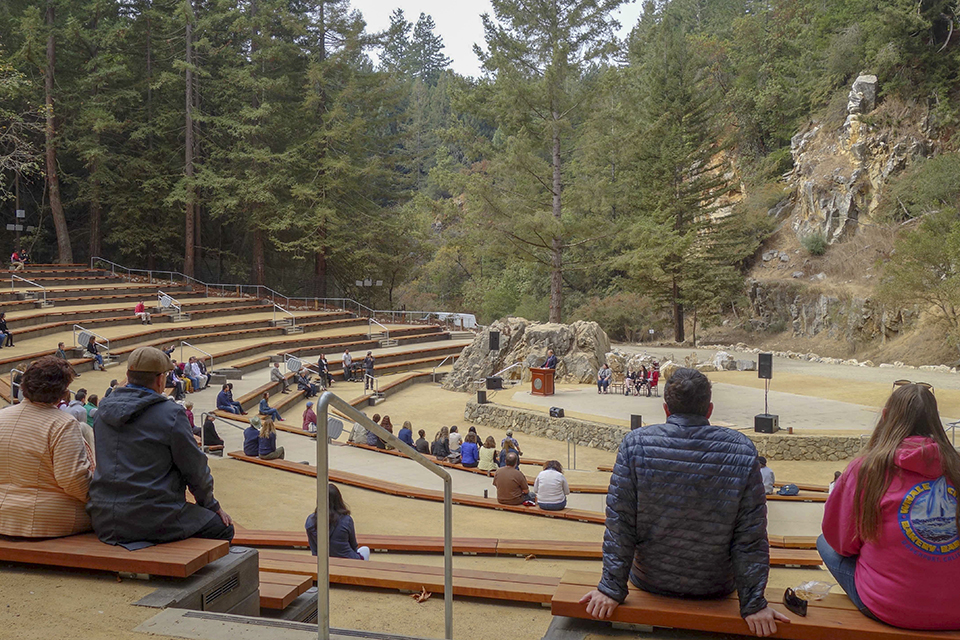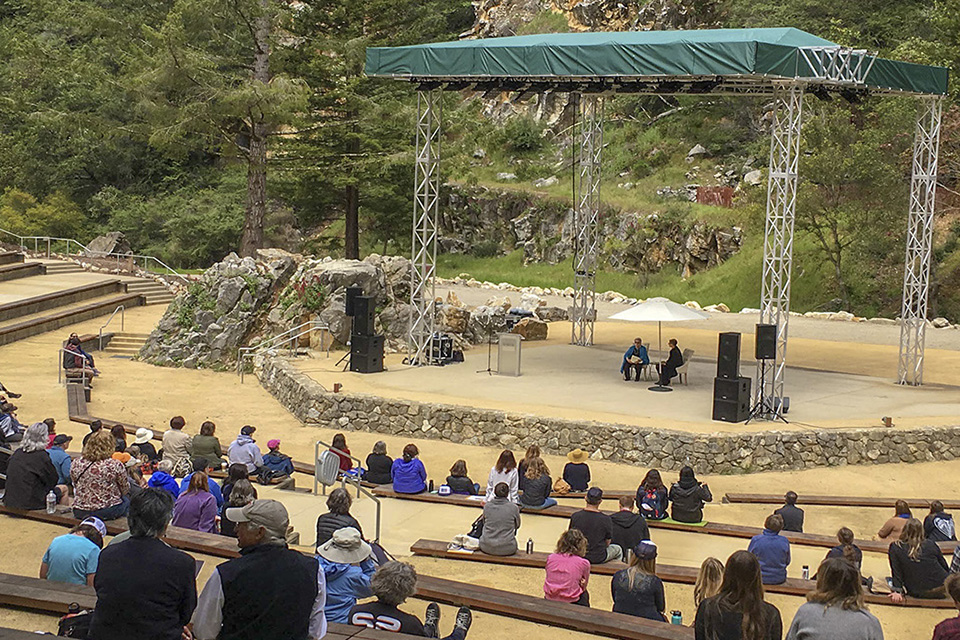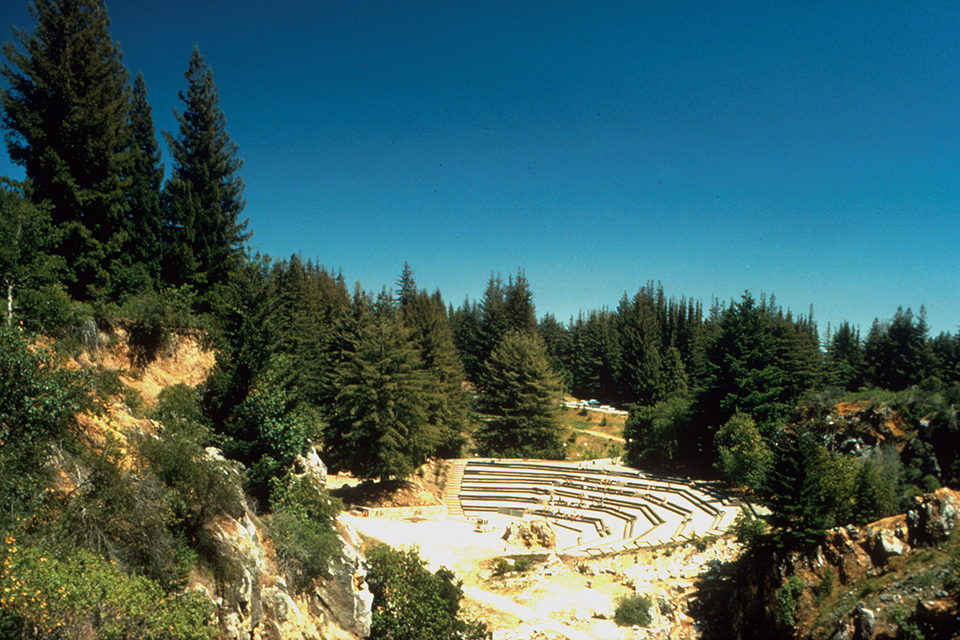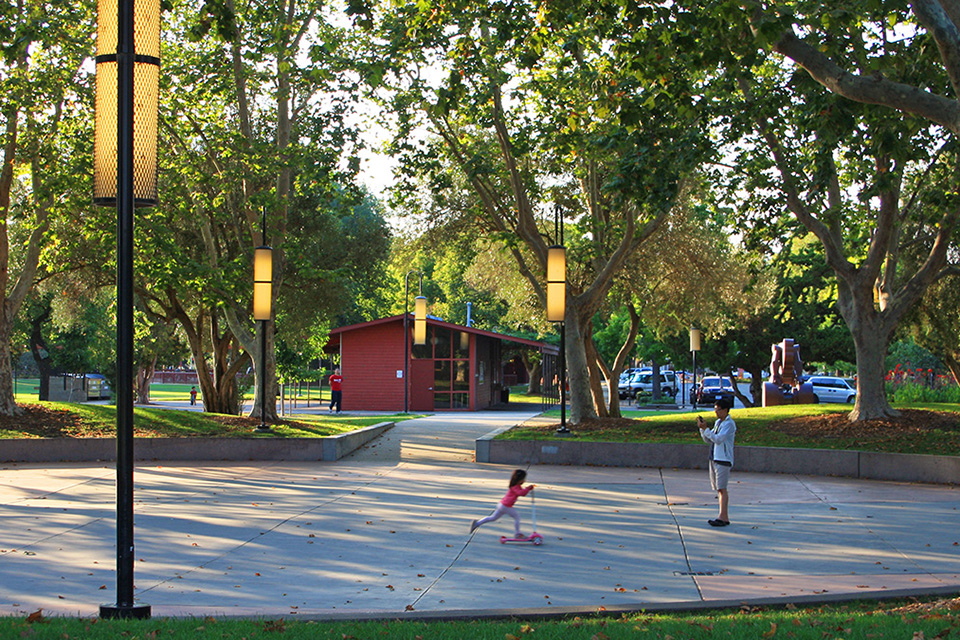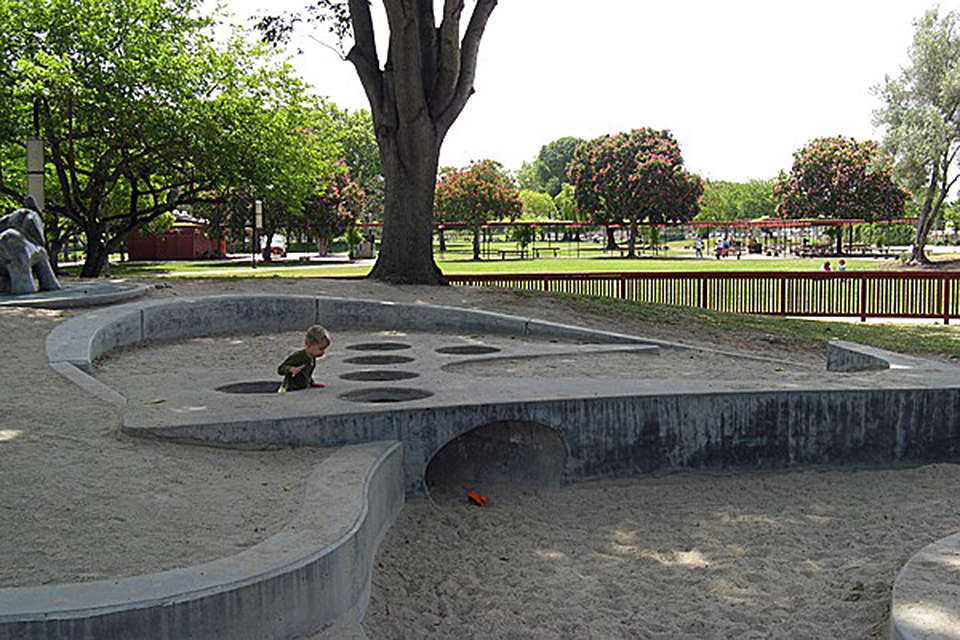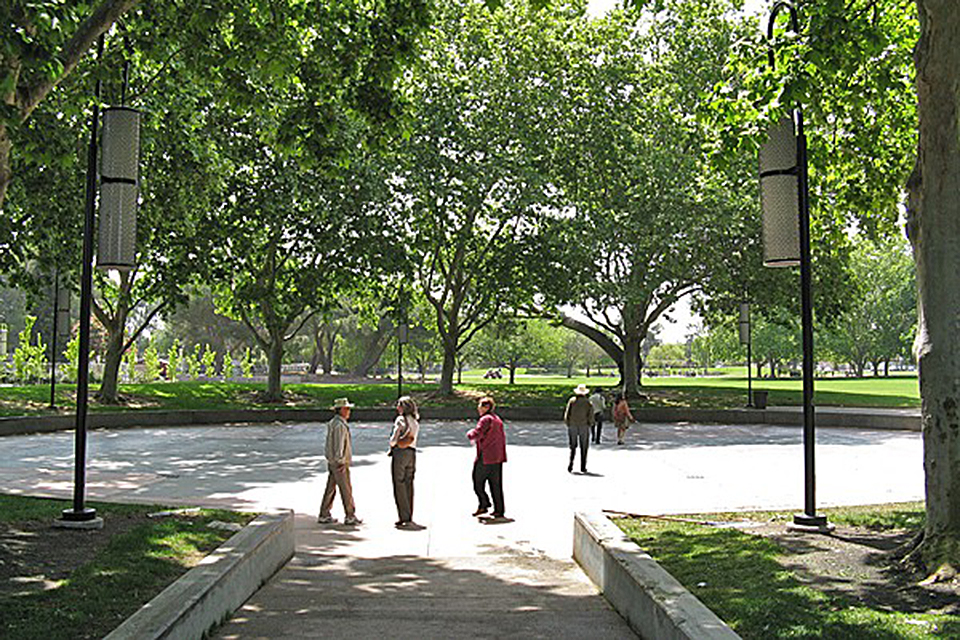Robert Royston (1918-2008) was born in San Francisco, California, and began his six-decade-long career in landscape architecture after graduating from the University of California, Berkeley. During his studies he experimented with new and interdisciplinary approaches and developed a layered, playful, and highly functional design vocabulary. After working for the pioneering modernist Thomas Church in the 1940s, Royston served in the Navy during World War II and returned to partner with Garrett Eckbo and Edward Williams to form Eckbo, Royston & Williams. Beginning with residences and gardens, Royston’s practice soon expanded to parks and playgrounds, including Mitchell Park in Palo Alto and Central Park in Santa Clara. Over the course of his career, he taught and lectured at more than 25 colleges and universities in the United States. Royston started a new firm in 1958 with partners Asa Hanamoto and David Mayes, which ultimately became Royston, Hanamoto, Alley & Abey, now headquartered in Mill Valley, California. In 1973 Royston was named a Fellow of the American Society of Landscape Architects (ASLA) and was awarded the ASLA Medal, the society’s highest award, in 1989.
Over its 25-year history, TCLF has worked to bring national attention to Modernist landscape architects including Royston as well as Lawrence Halprin, Garrett Eckbo, Dan Kiley, John Ormsbee Simonds, Cornelia Hahn Oberlander and others, organizing numerous events to share this legacy with the public. In May of 2008 TCLF offered a two-day garden excursion (curated by Royston biographer J.C. Miller) called Roystonland Rediscovered: Celebrating the Modernist Parks and Gardens of Robert Royston. The first day’s itinerary included visits to Mitchell Park in Palo Alto, Santa Clara Civic Center, and Central Park in Santa Clara. The second day featured visits to St. Mary’s Square, San Francisco; Pettit Garden, Piedmont; Estates Drive Reservoir, Piedmont; Dondo House, Point Richmond; Wilsey/Coyne Garden, San Rafael; and Royston & Stein Gardens, Mill Valley.
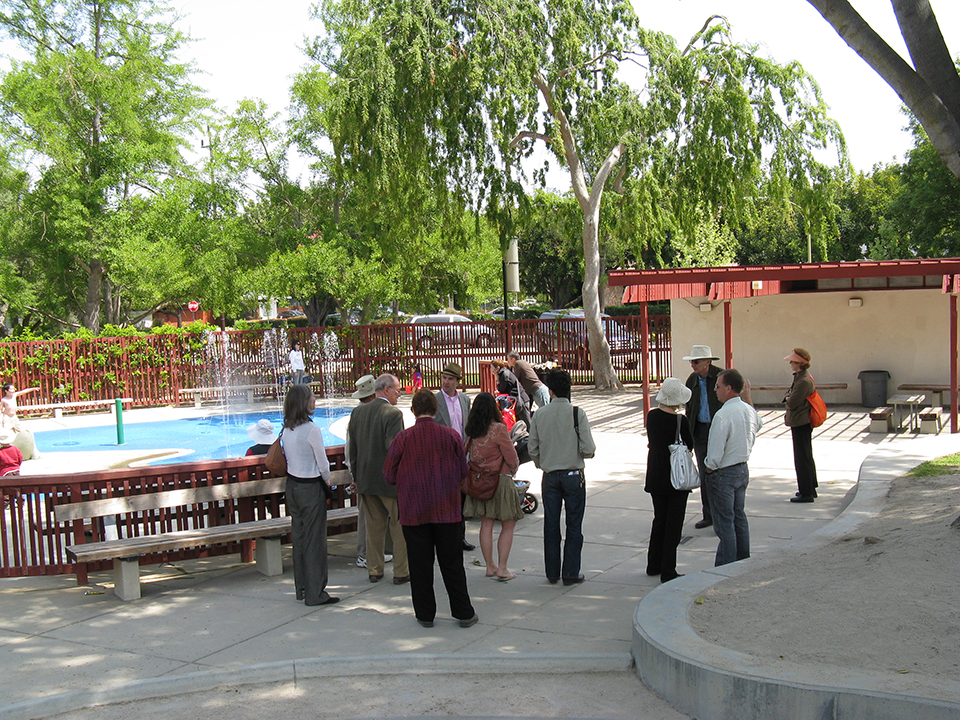 Tour of Mitchell Park during Roystonland Rediscovered, Palo Alto, CA, 2008. Photo by Charles A. Birnbaum, courtesy The Cultural Landscape Foundation.
Tour of Mitchell Park during Roystonland Rediscovered, Palo Alto, CA, 2008. Photo by Charles A. Birnbaum, courtesy The Cultural Landscape Foundation.
In 2009, a year after Royston’s death, TCLF convened a symposium at the University of California, Berkeley, on Landscapes for Living: Post War Years in Northern California, the third in a series of national symposia that placed a spotlight on this revolutionary era of landscape architecture. Landscapes for Living focused on the unique postwar legacy of public and private landscapes in Northern California through participants who played an active role during this unprecedented time of innovation and experimentation. Asa Hanamoto, J.C. Miller, and Tito Patri – colleagues and friends of Royston – were featured speakers. Royston’s illustrated biographical profile was also included in two TCLF publications produced in concert with the University of Virginia Press: Shaping the American Landscape (2009) and Shaping the Postwar Landscape (2018).
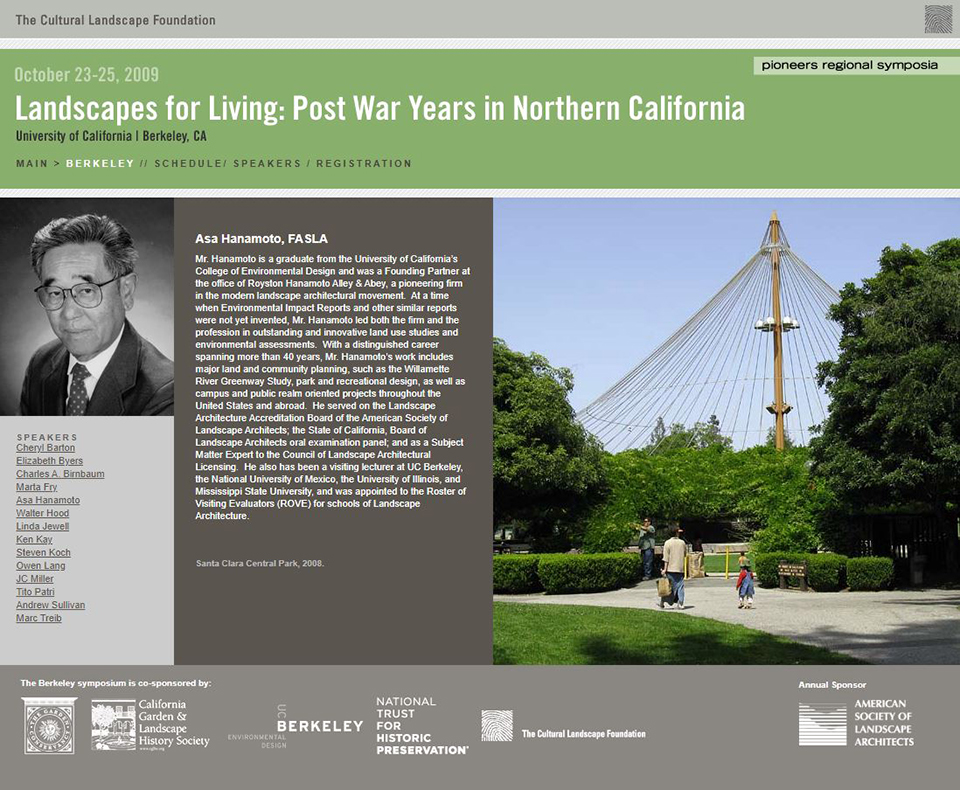 Speaker profile of Asa Hanamoto, Landscapes for Living: Postwar Years in Northern California, Berkeley, CA, 2009. Image courtesy The Cultural Landscape Foundation.
Speaker profile of Asa Hanamoto, Landscapes for Living: Postwar Years in Northern California, Berkeley, CA, 2009. Image courtesy The Cultural Landscape Foundation.
As part of What’s Out There Weekend San Francisco Bay Area in September of 2019, TCLF orchestrated free tours of “Mostly Modern” parks, gardens, and public spaces, including Royston’s Mitchell Park. Visitors were treated to a tour led by J.C. Miller, who frequently lectures on mid-century landscapes as both a practitioner and as an academic. More than 1,000 individuals participated in the nearly sold-out tours of the area. Media highlights included coverage in traditional print such as the East Bay Express, San Francisco Magazine, the San Francisco Chronicle, as well as numerous influential blogs throughout the area.
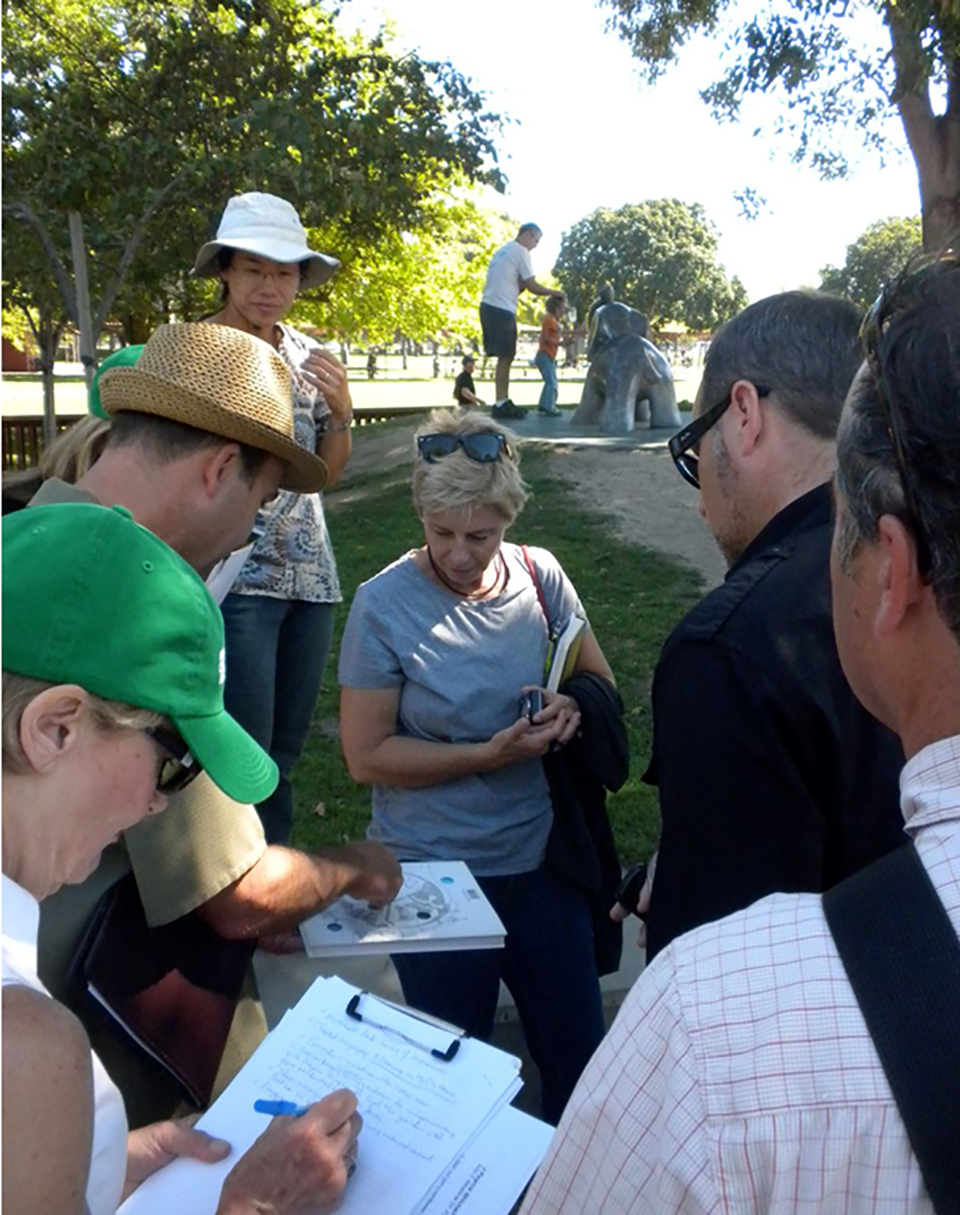 Tour of Mitchell Park during What’s Out There Weekend San Francisco, 2011. Photo by Katherine McDonough, courtesy The Cultural Landscape Foundation.
Tour of Mitchell Park during What’s Out There Weekend San Francisco, 2011. Photo by Katherine McDonough, courtesy The Cultural Landscape Foundation.
Royston’s distinguished career, extensive mentorship, and stylistic sensibilities have left an indelible mark on the field. To honor his career and legacy TCLF released a video oral history about Royston in 2020 as part of its award-winning Pioneers of Landscape Design Oral History Project series, which documents, collects, and preserves first-hand information from landscape architects and educators. TCLF also gathered recollections from his colleagues, professional associates, and family for the project, highlighting their stories and memories.
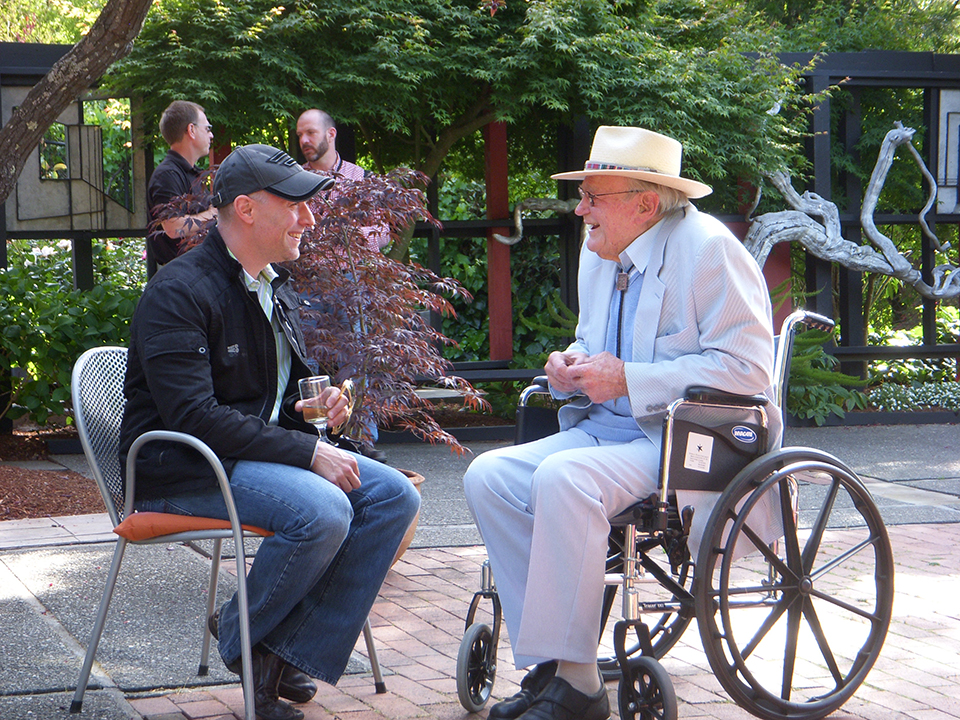 Charles A Birnbaum (left) and Robert Royston (right) at wrap party, 2007. Photo courtesy The Cultural Landscape Foundation.
Charles A Birnbaum (left) and Robert Royston (right) at wrap party, 2007. Photo courtesy The Cultural Landscape Foundation.
Upon his death, Linda Jewell, chair of UC Berkeley's Department of Landscape Architecture and Environmental Planning, said Royston had a perpetual smile on his face. "He enjoyed every moment of his life and that translated into the joy you saw in his landscapes." The two sites featured below were, and – thanks to public involvement, dedicated advocacy, and informed stewardship – continue to be, beloved by their communities.
This 21-acre community park, designed by Eckbo, Royston and Williams in 1956, serves as an example of postwar park design and reflects changing cultural attitudes about the role of outdoor recreation in suburban American life. Royston understood that neighborhood parks were an “extension and an integral part of the lives of the people [living] around it.” Originally named Meadow Park, the site was conceived as a large, citywide park intended to serve several neighborhoods on the suburban fringe of Palo Alto, which at the time was quickly filling up with detached, single-family homes within easy walking distance. Once a wheatfield, this flat site was adjacent to two new elementary schools and a middle school with about twelve acres for playgrounds and team sports.
Background
The plan for the park included 29 features, among them a wild garden, picnic areas, playing fields, a community building, sunken skating rink, several children’s playgrounds, and special facilities for the elderly, including lawn-bowling (bocce) and board-game tables. According to Miller and Rainey, the park is “one of the clearest embodiments of Royston’s concept of a park as a public garden: it serves a wide range of age groups and creates a place for social gatherings and civic rituals that foster a sense of community.”
Many unique features attract users to Mitchell Park. Low curvy forms and simple vertical lines within the park reflect influences from twentieth-century artists such as Alexander Calder, Joan Miro, and Piet Mondrian, who were also embraced by Royston’s contemporaries and colleagues, Eckbo and Hanamoto. A simple circulation system consisting of a single axis and cross axis anchor the different spaces of the park and provide easy access. Park light fixtures, inspired by the design of traditional Chinese paper lanterns, illuminate the curving pathways.
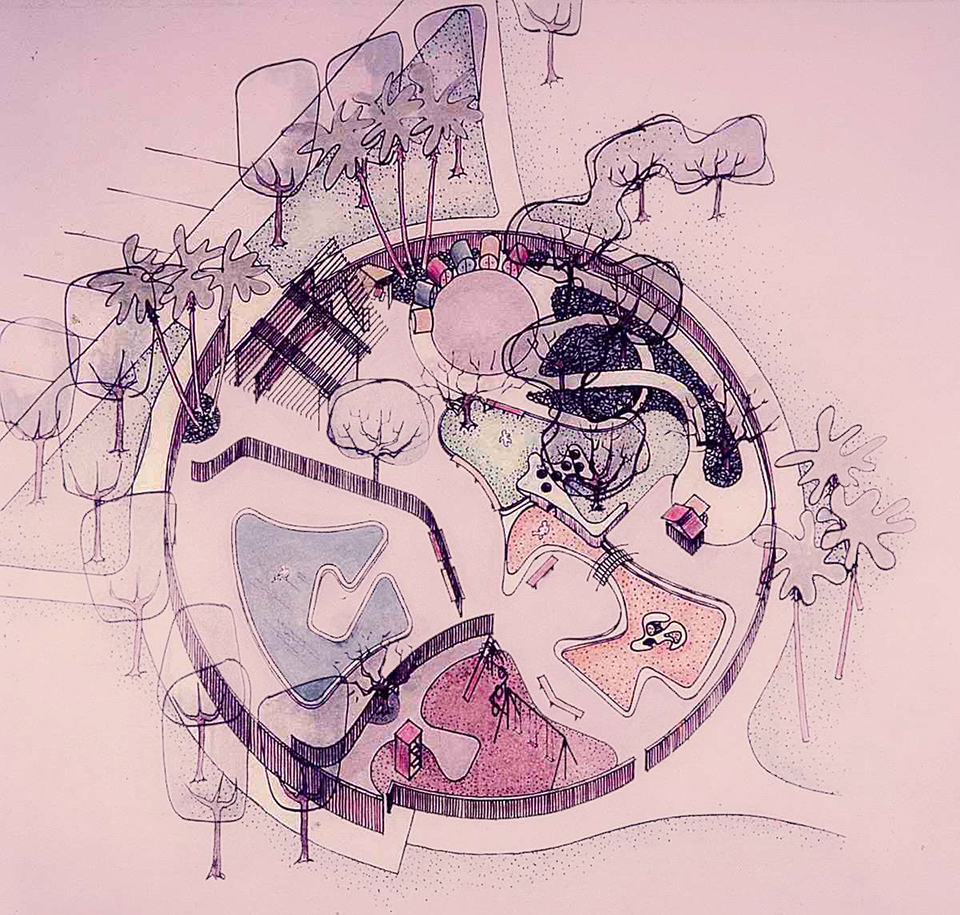 Axonometric plan for Tiny Tot Playground, Mitchell Park, Palo Alto, CA. Image courtesy Modern Public Gardens: Robert Royston and the Suburban Park, by Reuben M. Rainey and J.C. Miller, 2006.
Axonometric plan for Tiny Tot Playground, Mitchell Park, Palo Alto, CA. Image courtesy Modern Public Gardens: Robert Royston and the Suburban Park, by Reuben M. Rainey and J.C. Miller, 2006.
The play areas and structures designed by Royston embodied his belief that, as Rainey puts it, “certain sensations, such as surprise, height, free movement, and concealment, are important parts of a child’s development.” The childen’s play area included a multi-story “apartment house” and slide; there were bear sculptures by Bay Area artist Virginia Green for climbing; a biomorphic wading pool; “gopher holes” cut into a hollow, curving, concrete slab set into a turf berm; and a “freeway” with a gas station and garages where children could park their big-finned cars.
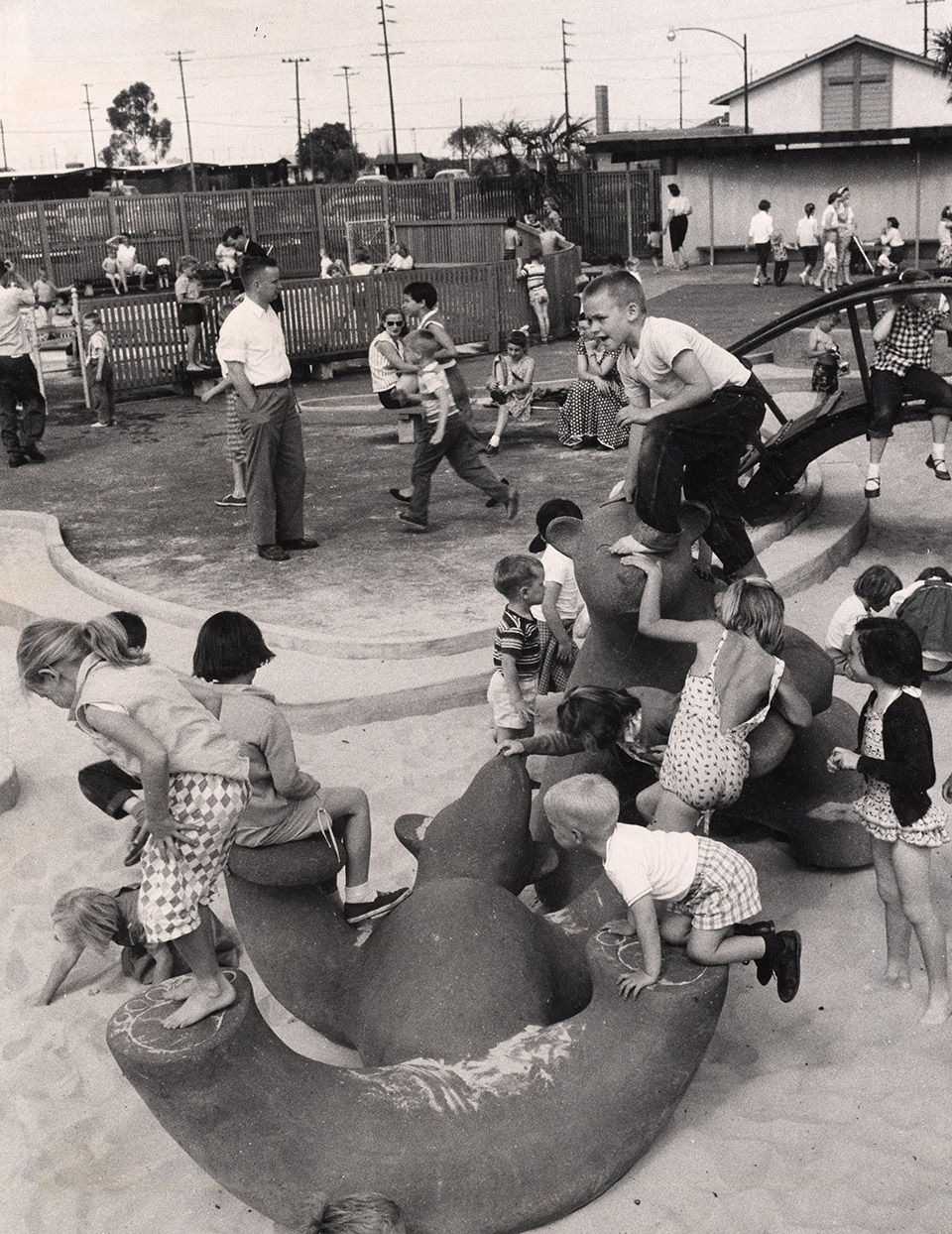 Mitchell Park, Palo Alto, CA, circa 1950s.
Mitchell Park, Palo Alto, CA, circa 1950s.
When the park opened (named Mitchell Park to honor J. Pearce Mitchell) it attracted national attention; delegates to the 1958 International Recreation Congress from Greece, Egypt, and Japan visited the park, and it was praised by Palo Alto city planners. ASLA created a short documentary about the park, to “show people what could happen and what neighborhood parks could be.”
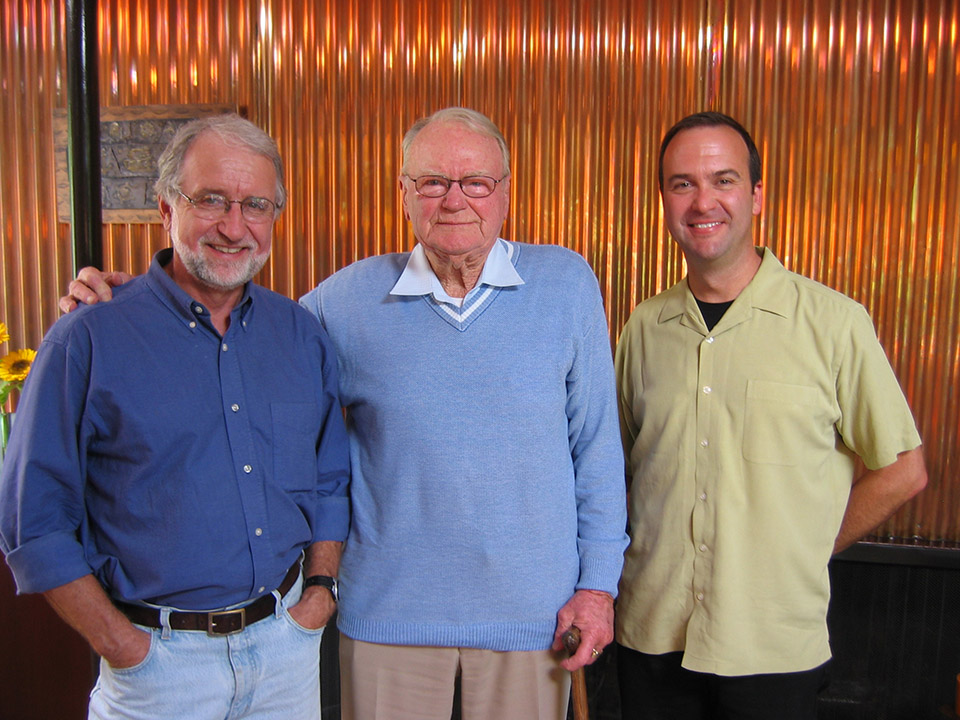
Pictured [left to right] Tom Fox, videographer, Robert Royston, and J.C. Miller, author., Mill Valley, CA., 2007. Phot by Charles A. Birnbaum, courtesy The Cultural Landscape Foundation.
Advocacy and Engagement for Mitchell Park
In 2001 the city of Palo Alto set out to rehabilitate the 45-year-old Mitchell Park, which had, over the years, suffered from maintenance problems and safety issues. Dillingham Associates, landscape architects, were tasked with preparing a detailed inventory of park conditions and then the necessary design and construction documents. Initially the city’s concerns were practical and involved repairing aging structures and bringing them into compliance with current safety codes. The idea of an historic rehabilitation had not been seriously considered, given the safety requirements, costs, and diverse public opinion. Many parents in the neighborhood had an active interest in a “state-of-the-art” play area; however, a member of the community pointed out the historical value of the park and play areas, after which the movement to rehabilitate the park took hold. As the public came to understand the regional and historic value of the site, they began to pressure the city to take on a project that would balance design and historic preservation concerns. Once the city staff understood that there was a significant value to the park and that the community would support an effort to save it, they embraced the idea as well.
 Tour of Mitchell Park during Roystonland Rediscovered, Palo Alto, CA, 2008. Photo by Charles A. Birnbaum, courtesy The Cultural Landscape Foundation.
Tour of Mitchell Park during Roystonland Rediscovered, Palo Alto, CA, 2008. Photo by Charles A. Birnbaum, courtesy The Cultural Landscape Foundation.
Fortunately, Royston was interested in contributing to the project, and was open to the changes that would be necessary to meet current standards. He understood very well the issues facing landscape architects, such as safety zones and accessible routes. In the end, quite a few elements were saved, like the gopher holes and the beloved bears, leaving opportunities to develop new elements such as a reading circle and a kitchenette for birthday parties at the tot-lot. As the original designer, Royston was able to clearly communicate the project’s initial design intent. It became apparent that the key to his creative approach to the design of the play areas was to focus on a child’s perspective, not the usual adult perspective. Understanding this basic concept was an important breakthrough for the rehabilitation project. Mitchell Park managed to retain its original historical character while addressing contemporary safety concerns. TCLF retrospectively celebrated this formerly at-risk landscape in its 2003 designation.
Once part of the Cowell Ranch Lime Works, a major supplier of lime to San Francisco after the Gold Rush in the 1800s, this 0.7-acre sunken pit was envisioned as an outdoor theater in the 1965 master plan for the University of California, Santa Cruz (UCSC) by landscape architect Thomas Church, who laid out temporary seating on the quarry floor for the 1966 inauguration of the university’s first president. Church recommended that Royston design a permanent theater for the site, which is situated at the heart of campus, nestled amid redwoods and rocky outcroppings.
Background
Royston distorted a conventional theater layout into diverging rows of redwood seats and meandering stairs to reflect the irregular geometries of the quarry. He oriented the seating towards a hundred-foot-high quarry wall and located the stage between an existing boulder and two towering redwoods. Visitors immediately had a panoramic view of the imposing wall upon entering the theater; they then descended into the auditorium along one of several routes winding through the seats and chairs. The sequence of movement through the site was deliberately choreographed to focus on the surrounding natural features; it is in fact one of the few post-World War II theaters designed to accentuate its landscape setting.
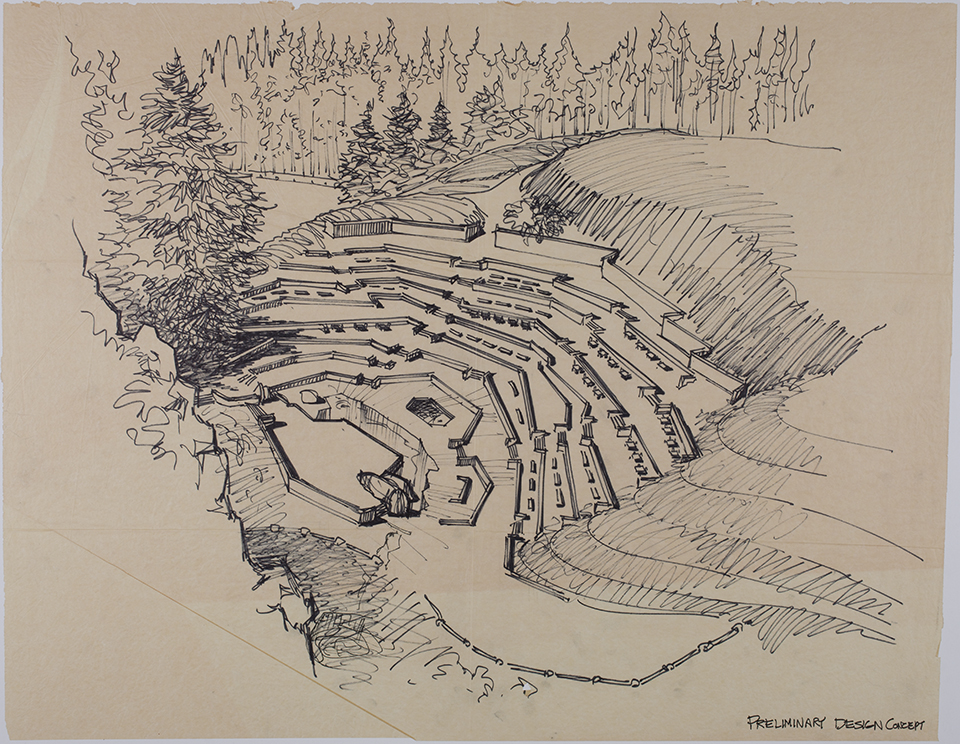 Preliminary design concept for the Quarry Amphitheater, Santa Cruz, CA. Image courtesy Robert N. Royston Collection, Environmental Design Archives, University of California, Berkeley.
Preliminary design concept for the Quarry Amphitheater, Santa Cruz, CA. Image courtesy Robert N. Royston Collection, Environmental Design Archives, University of California, Berkeley.
After the 1,636-seat theater was completed in 1967, it quickly became the center of campus life, hosting graduations, concerts, and speakers ranging from Angela Davis and Cesar Chavez to Buckminster Fuller and Joan Baez. The project won a 1968 Association of Landscape Architects award, but perhaps the greatest compliment came from Royston’s mentor, Church, who said, “Every time I see it, I think Bob is a genius.”
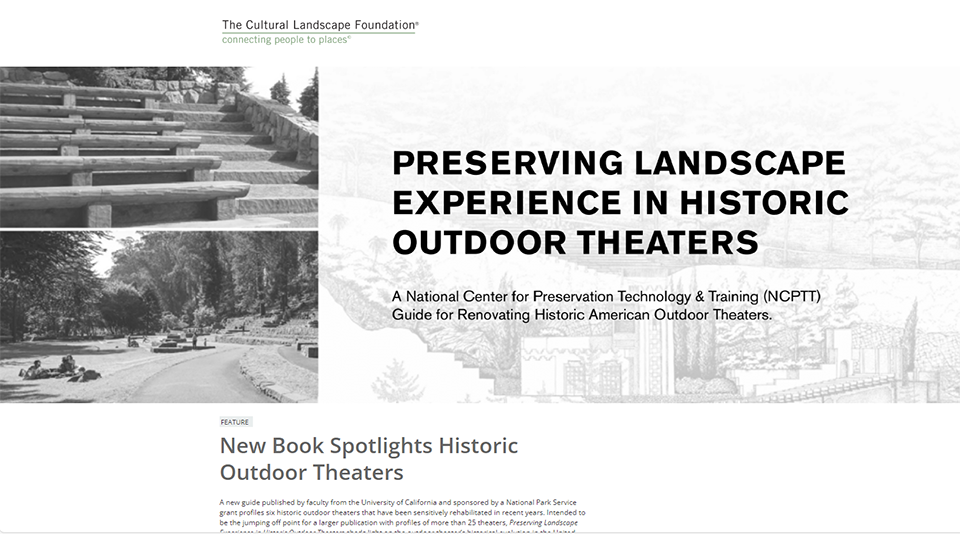
The Quarry Amphitheatre was featured in Preserving Landscape Experience in Historic Outdoor Theaters, as detailed in a 2023 TCLF feature. Image courtesy The Cultural Landscape Foundation.
Advocacy and Engagement for Quarry Amphitheatre
Over a span of 40 years Quarry Amphitheatre’s redwood seats and steps had deteriorated significantly, and in 2006 safety concerns curtailed events there. In 2013 the university retained a team led by the Office of Cheryl Barton to study possible options for the theater. Subsequent workshops with students, faculty, and administrators included an investigation to expand it to 3,000 seats, an option that would have destroyed Royston’s design. Landscape architect Barton noted that when they embarked on the project “there was a huge emotional connection with the space at all age levels,” and “it was clear that so many people craved an intimate place to be quiet and contemplative.” Thus, the students and administration supported a rehabilitation effort that preserved and protected the original geometry and materials of the theater while addressing accessibility, safety codes, and new lighting. In its 2016 Landslide designation, TCLF drew attention to the site’s history and the need to raise funds for its rehabilitation, suggesting surveying and documenting the cultural resources at UCSC to help provide a needed context for future discussions about updating or renovating the landscape.
The Quarry Amphitheatre reopened in 2018 after a two-year, eight-million-dollar rehabilitation effort. Most of the funding came from the university’s Student Fee Advisory Committee (SFAC), which recommended that $6.4 million in student fee reserves be used for the effort, while alumni, faculty, staff, and donors also pitched in to cover the remainder. The project focused on restoring the space and improving accessibility and safety, as well as operational upgrades to enhance performances, special events, and daily use. The seating was expanded to accommodate 2,000 people, while stairs, ramps, handrails, and lighting were upgraded and accessibility improved.
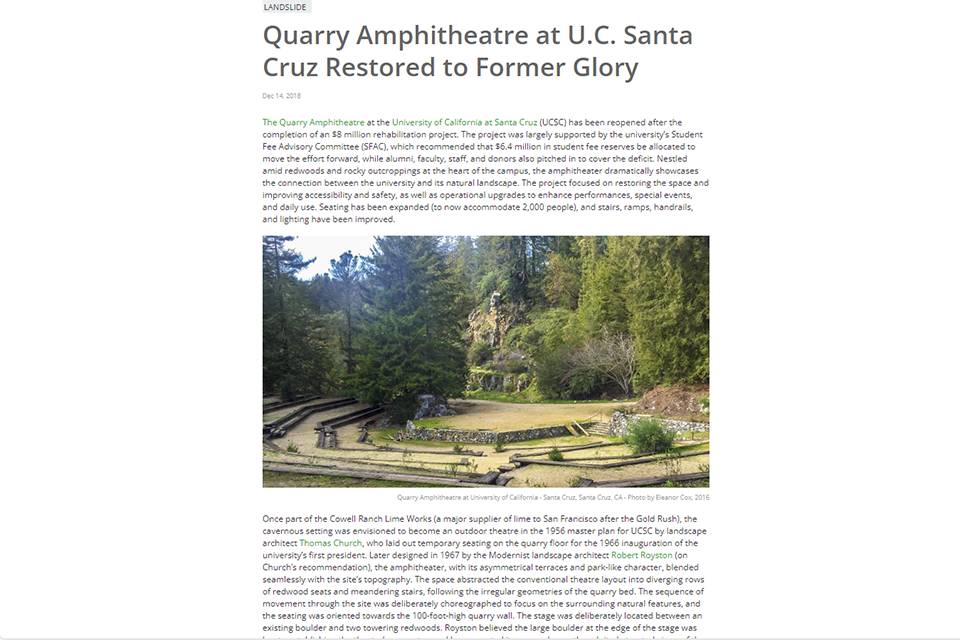 Quarry Amphitheatre Landslide update, 2018, Image courtesy The Cultural Landscape Foundation.
Quarry Amphitheatre Landslide update, 2018, Image courtesy The Cultural Landscape Foundation.
In 2023 the Quarry Amphitheatre was featured in Preserving Landscape Experience in Historic Outdoor Theaters, by Steve Rasmussen Cancian, Linda Jewell, and Camille Toma-Fill. The technical publication, funded by a grant from the National Park Service’s National Center for Preservation Technology and Training, investigated 25 successful rehabilitation efforts that could serve as best practices for renovating historic outdoor theaters while preserving the visitors’ experience of the landscape. Reflecting on the recent work at the Quarry Amphitheatre, the authors concluded: “Long time patrons, sitting in one of the nooks created by the theater’s unique geometry, would be happy to recognize the same experience that had drawn them for decades.”
Selected Resources
ASLA Documentary, Narrated by Royson, on Mitchell Park, Written and Produced by Carlyn Carr
Biographical Entry for Robert Royston in Shaping the Post War Landscape
“Quarry Amphitheatre at U.C. Santa Cruz Restored to Former Glory,” December 14, 2018
“New Book Spotlights Historic Outdoor Theaters”
Shaping the American Landscape (2009)
Shaping the Postwar Landscape (2018)
What’s Out There Cultural Landscapes Guide San Francisco
Selected Media Coverage
“‘Radical’ Mitchell Park to Celebrate 50th Anniversary,” Jocelyn Dong and Thea Lamkin-Carughi, Palo Alto Online, April 12, 2007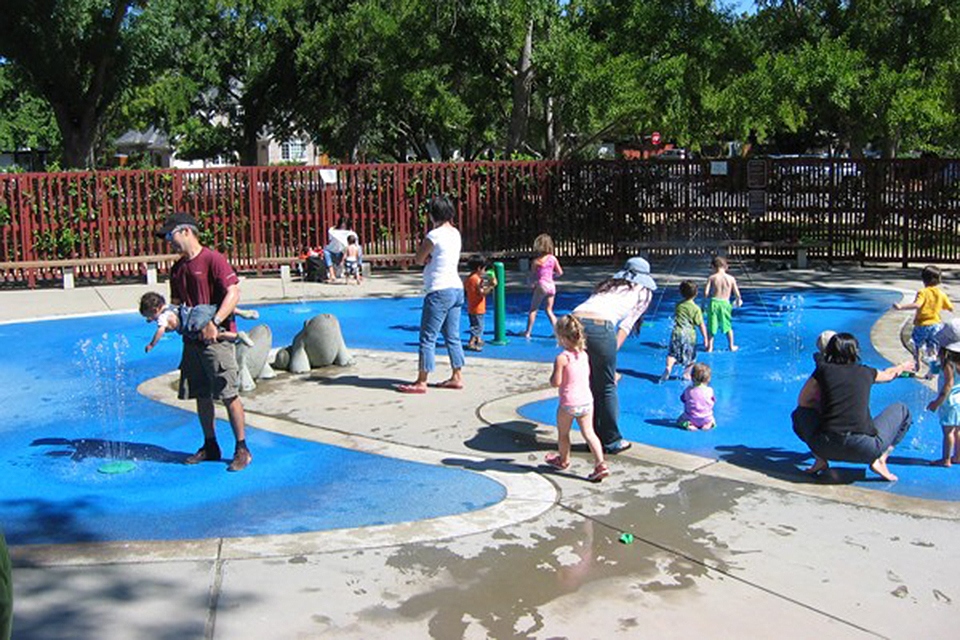
-
Mitchell Park, Palo Alto, CA. Photo courtesy The Cultural Landscape Foundation.
